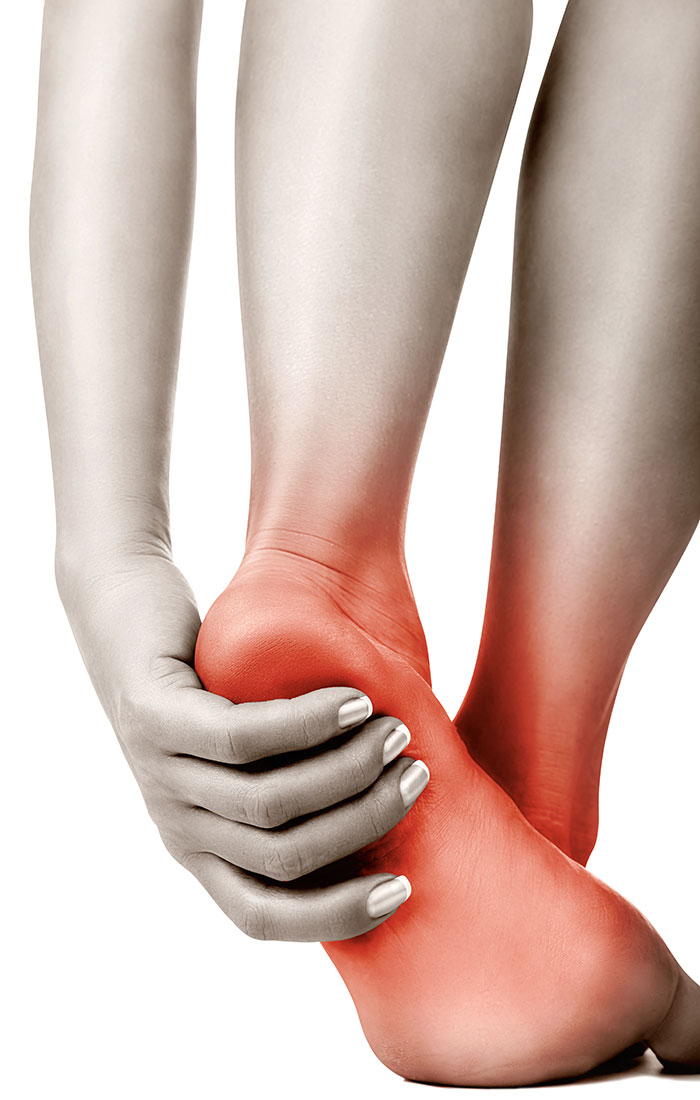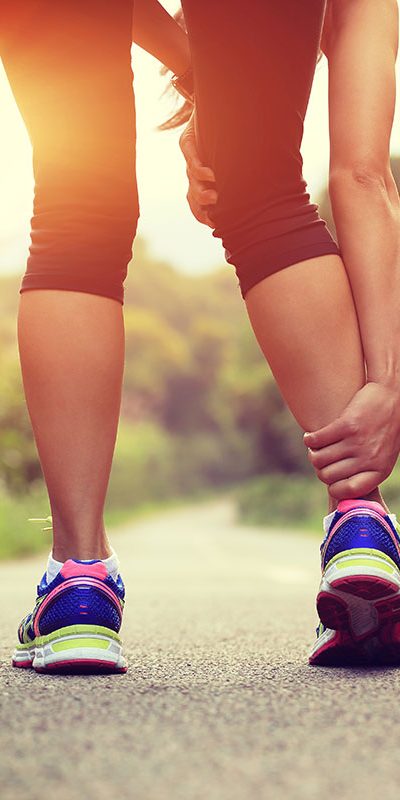Ottawa Foot Clinic Specializes In Heel & Foot Pain Treatment
Treating Sore Feet and Tired Soles, Fast!
No matter what is causing your discomfort, pain in the foot or heel is usually a progressive problem that gets worse the longer it goes untreated. Although pain episodes maybe on and off, you cant count on it resolving on its own. Trading a barefoot home lifestyle against the use of good, supportive indoor shoes will most likely help you. But, you may need more!
You may need to wear custom-made orthotic devices to compensate your overpronation, collapsing feet or other sorts of foot and ankle biomechanical imbalances which is/are overloading the affected ailing foot structure(s). Sole stiffeners, foot and ankle compression stocking, combined pain laser and shockwave therapy, topical anesthetic cream, cryo-analgesia, cortisone injection, foot taping and foot surgery as the very last resort may also be valuable options, depending on the severity of your specific foot condition(s).
To plan how to treat your foot condition(s) the most effective way, you need to obtain an accurate diagnosis first. Our team at Ottawa Foot Clinic will use a variety of diagnostic tests to thoroughly evaluate the nature and the stage of your specific condition(s). Then we will work with you to determine the best treatment option(s) that will alleviate your discomfort, promote a faster healing or recovery and prevent recurrence. Dont wait until youre limping to seek help from a foot specialist. But if you do limp, please contact our office in Ottawa by calling (613) 595-9700 to make an emergency appointment.

The Dramatic Impact Of Heel And Foot Pain
Feet are the foundation of the human body! So, any foot problem – even a minor one – has the power to put your whole body support, balance and structure completely off . Ailing or compromised feet may affect your life in many ways. Foot pain – either mild, moderate or severe – may, sooner or later:
- weaken you, from feet to neck;
- slow you down;
- limit your physical activities;
- add on extra-weight;
- affect your character;
- isolate you from family and friends;
- ruin your vacations;
- hamper your your capacity to focus;
- cut down your overall productivity.
The day you have enough of all these ailments will be the time to fix your feet…to enjoy life!
Understanding Your Feet and Heels
Your heel bone (calcaneus) carries a significant amount of body weight and helps you stand. It also makes normal movement, like walking, possible. A number of tendons and ligaments that move and support the whole foot are running around or attached to the calcaneus. It is the part of your foot that strikes the ground when you land a foot step. It also forms a joint with the ankle bones to allow your limb to rotate side to side, so you can adjust to uneven surfaces. Without this bone, normal mobility would be impossibleso heel pain can limit your activities as well as cause you discomfort.
The forefoot contains its own sets of nerves, bones, tendons, ligaments, articulations and muscles that contribute to the movement of the toes up to the whole body, allowing you to push off and propel yourself forward as you walk or run. Much of our balance is also focused in this area. Pain and deformities that develop here can shift our biomechanics and cause additional pain up the rest of the body.

Why Your Heels or Feet Hurt?
“Heel pain” or “foot pain” are general terms that encompass many different conditions. Anything that causes pain in these locations foot can fit into this category of foot problems. Some specific foot conditions can cause discomfort and pain, such as:
Plantar Fasciitis This is the most common source of heel pain in adults. Its a problem with micro-tears, tightening, swelling, and irritation in a band of tissue, called the plantar fascia or ligament, that connects to the bottom of your heel down to the bottom of your toes and up to the calcaneal or Achilles tendon.
Achilles Tendinitis The Achilles is the biggest tendon in your body. It pulls on the back of your heel to make walking possible. It can get stiff or overloaded and pull painfully on the back of the foot.
Haglunds Deformity also known as posterior calcaneal exostosis or ”pump bump” In high-arched feet, where the back of the heel bone is naturally way more prominent, pressure and friction against normal closed shoes may result in a sore bony bump that interfere with normal physical activities and limit shoe selection. This is a symptomatic exostosis complicated with a calcaneal insertional tendonitis (enthesitis) at the posterior aspect of the heel where the Achilles tendon inserts into the calcaneus.
Bursitis A bursa is a fluid sac that helps protect moving parts from friction. You have one between your Achilles tendon and your heel bone. Abnormal tension and repetitive friction of the tendon squeezed between the shoe counter and the back of your heel bone can cause a bursa to become sore, red, swollen and inflamed. You may also develop an inflamed bursa in between lesser toe joints causing or worsening a nerve pain.
Arthritis Grinding or wear-and-tear between the bones of any joint create inflammation and stiffening. This could also be caused by gout or an autoimmune disease like rheumatoid arthritis. More than 150 types of arthritis exist. Osteoarthritis, due to long-standing foot misalignment forcing the weight bearing joints out-of-alignment, is, by far, the most prevalent form of arthritis.
Fractures Although sudden, hard impacts can actually break calcaneal bones, this is rare. However, we see much more frequently repetitive low-impact foot strikes from running or jumping or sudden increase in physical activities causing stress fractures . Either way, a minute hairline fracture or a complete break in the calcaneus is especially painful and significantly weakens your foot and your whole body.
Sesamoiditis Tiny twin bean-shaped bones called the sesamoid bones are located right under the big toe joint. When these bones are crushed to fissurated or whenever the tendon surrounding these bones become inflamed, it causes pain in the ball of the foot right under the big toe joint.
Capsulitis The ligaments that form a “capsule” around a toe joint become inflamed and painful due to abnormal foot mechanics overloading this specific foot area. This commonly happens right under the second toe joint.
Tarsal Tunnel Syndrome When feet did overpronate for decades, the chronically overstretched tibial nerve that travels along the inner leg becomes gradually inflamed, swollen and thus compressed inside the non-extensible rigid tunnel that normally protects it. The over-compressed nerve may cause radiating pain throughout the affected foot and leg along with pain, swelling and tenderness on palpation right under the inner malleola.
Hallux Limitus Stiffness or gradual loss of motion can occur in any overloaded big toe joint due to abnormal foot mechanics. X-rays will show a big toe joint topped by a bone spur (exostosis) acting as a door stop! If this premature, biomechanically-induced or overuse osteoarthritis is not treated, the toe joint may become fully rigid over time.
Hammertoes Cramped toes can sometimes become fixed in a bent position. This can make walking around or wearing some footwear more difficult.
Nerve Issues A nerve swelling and compression such as Morton’s neuroma and tarsal tunnel syndrome or nerve endings damage from peripheral neuropathy all can cause pain that radiates up into the heel or down to toes.


